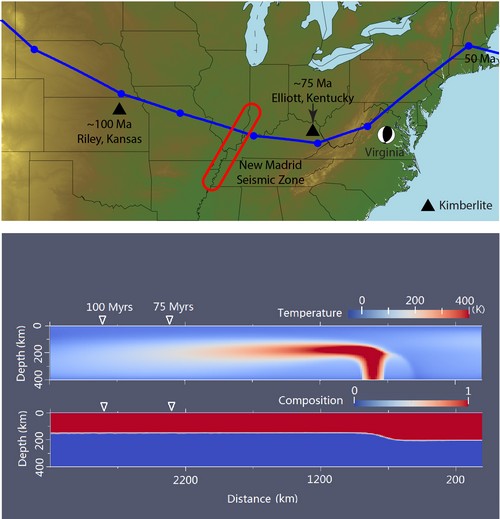Hotspot tracks are thought to be the surface expressions of tectonic plates moving over upwelling mantle plumes, and are characterized by volcanic activity that is age progressive. At present, most hotspot tracks are observed on oceanic or thin continental lithosphere. For old, thick continental lithosphere, such as the eastern United States, hotspot tracks are mainly inferred from sporadic diamondiferous kimberlites putatively sourced from the deep mantle.
Recently, Prof. RiSheng Chu et al use seismic waveforms initiated by the 2011 Mw 5.6 Virginia earthquake, recorded by the seismic observation network US Array, to analysis the structure of the continental lithosphere in the eastern United States. They identify an unexpected linear seismic anomaly in the lower lithosphere that has both a reduced P-wave velocity and high attenuation, and which they interpret as a hotspot track. The anomaly extends eastwards, from Missouri to Virginia, cross-cutting the New Madrid rift system, and then bends northwards. It has no clear relationship with the surface geology, but crosses a 75-million-year-old kimberlite in Kentucky. They use geodynamical modeling to show that an upwelling thermal mantle plume that interacts with the base of continental lithosphere can produce the observed seismic anomaly. They suggest that the hotspot track could be responsible for late Mesozoic reactivation of the New Madrid rift system and seismicity of the eastern United States.
The work has been published in Nature Geoscinece (2013)

Hotspot tracks and its Geodynamic research beneath the eastern United States (image by IGG)

